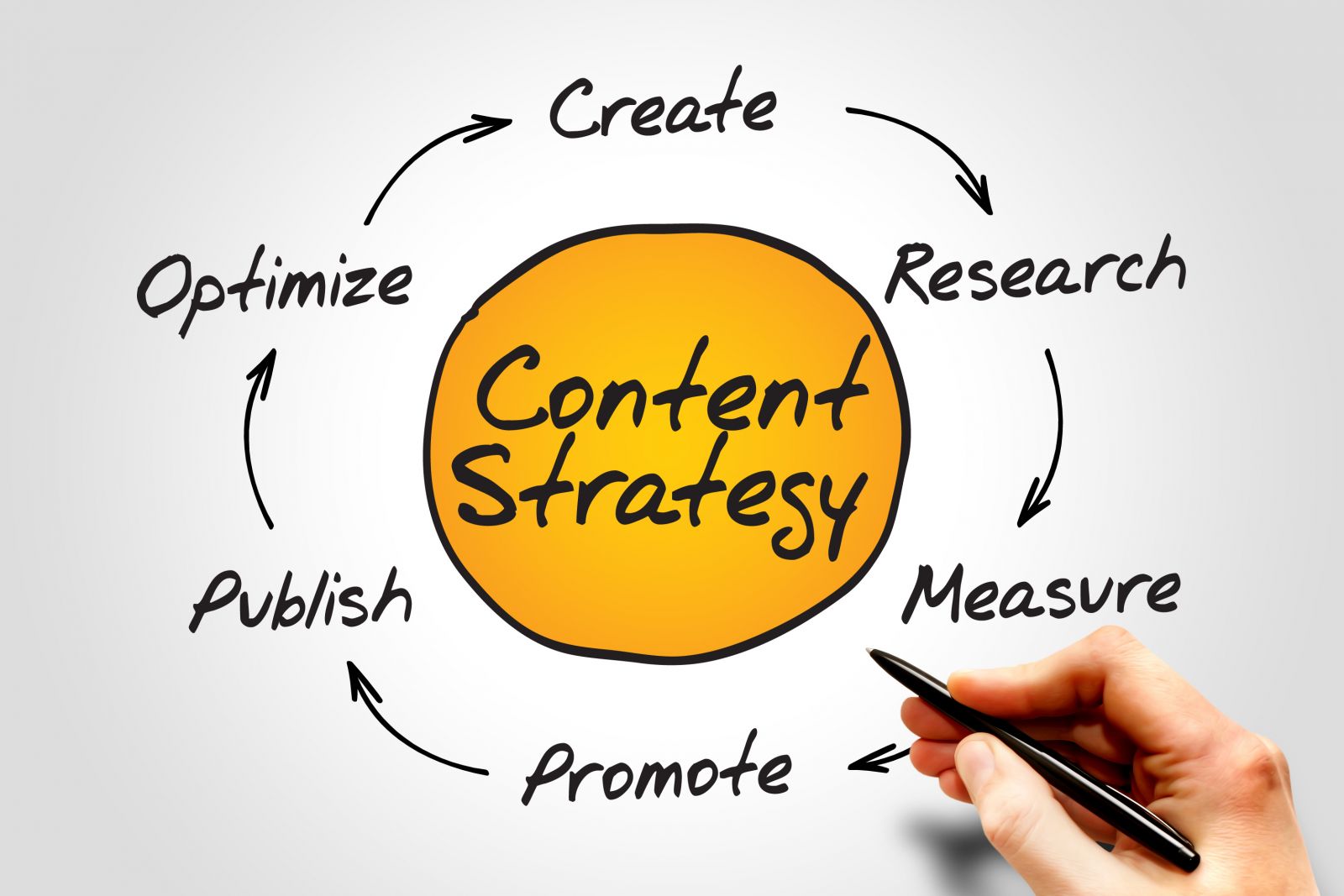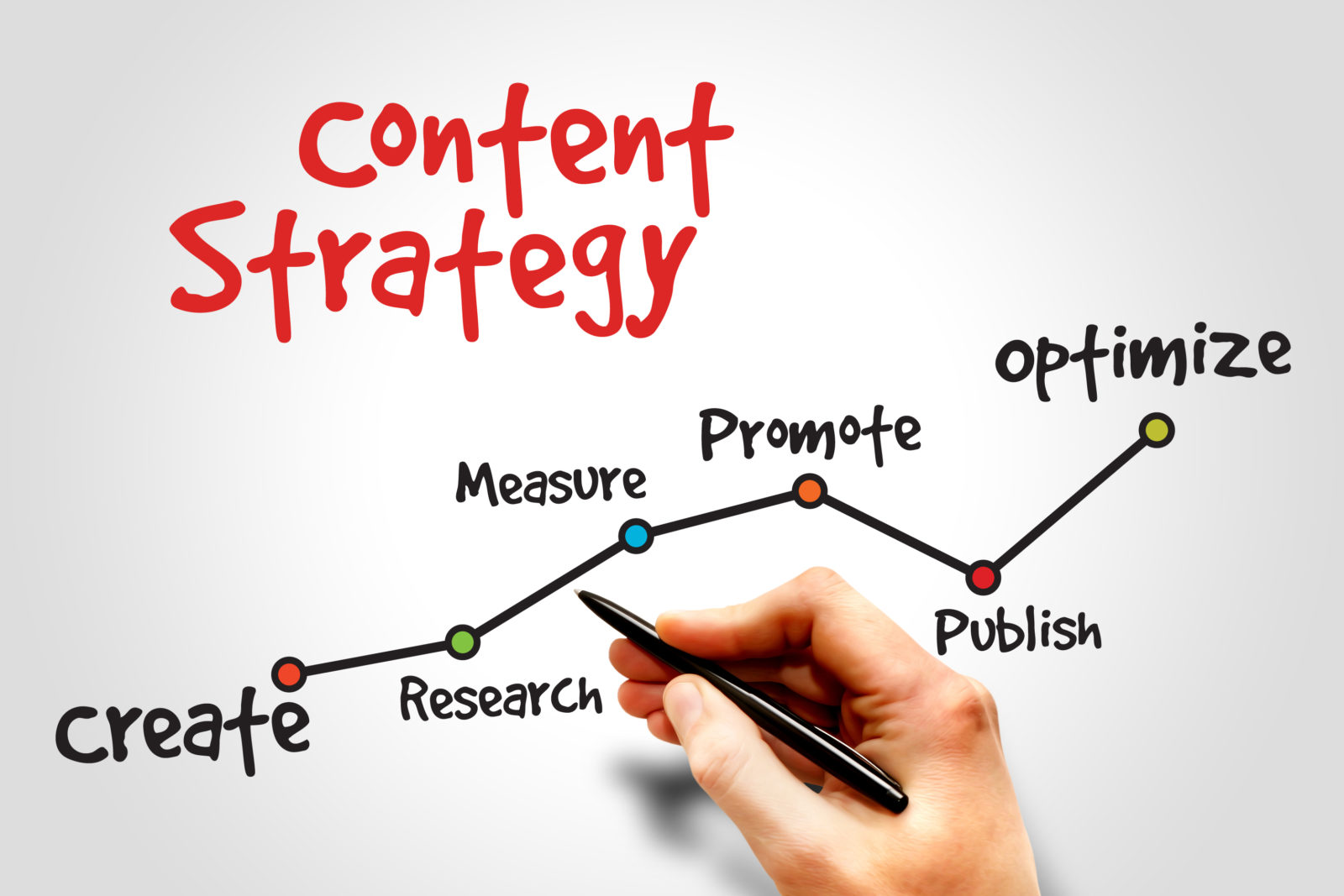What is enterprise content marketing?
Enterprise content strategy provides relevant content to a company’s audience, focusing on its specific pains and needs, to build a rapport with it, and improve the results of the marketing campaigns.
It can be used in all stages of the customer’s journey since it is adequate to create brand awareness, educate the audience, build credibility, and nurture leads, for example.
An enterprise content marketing strategy is specifically designed for large-size companies (with more than 1,000 employees), considering its needs, budget, challenges, and teams. So, there are substantial differences between a content strategy for a small or mid-size business and an enterprise.
For instance, the content strategy is usually more complicated at the enterprise level. One reason is that there are more aspects to take into account while building a marketing campaign, more significant risks, and more professionals involved in the decision-making processes.
Besides that, sometimes it is necessary to coordinate efforts across the organization — from the marketing team to sales and customer success. This requires some changes in the business’ processes that allow integration between distinct departments and teams.
Moreover, the types of content are also different because they are created based on the audience’s profile, which is significantly distinct, primarily when the organization is focused on the B2B market.
What are the most common types of enterprise content strategy?
An enterprise content strategy can include several types of content. To build a successful one, it is essential to choose the appropriate ones according to your goals and the target audience.
Discover some of the most common types of content to use on your enterprise’s strategy.

Social Media Content
As reported by the content marketing institute (CMI), in 2019, 94% of the marketers who responded to the survey produced content for social media, such as stories and tweets. It is useful to attract new leads, present your brand, services or products.
In addition to that, social media content, along with blog posts/short articles, is the most effective type of content to build brand awareness for 28% of marketers, according to the same CMI study.
Videos
It is interesting to use videos on an enterprise content strategy because they are easy to consume and share, among other benefits.
You can use videos for several purposes, such as:
- present your company’s story, values, mission, results;
- explain how your services will help the audience;
- explain concepts connected to your business’ services.
Depending on how you use videos in your strategy, it is possible to boost brand awareness, build trust and educate your audience.
Blog Posts
They are extremely helpful for all stages of the sales funnel. By exploring topics that can be associated with your field of expertise, your company succeeds in nurturing your leads and driving them through the funnel, from awareness to conversion and post-sales.
Blog posts will educate your audience, bringing valuable content that will help them solve simple problems or understand a specific subject, for example.
It is also interesting to point out that you can embed other types of content within the blog posts to make it more compelling — images, videos, infographics, and quizzes.
Case Studies
This type of content is the second most effective to convert leads, as suggested by the CMI’s report released in 2020.
Case studies present your customers’ success stories, showing the problems and pains they had before recurring to your solution, how your company helped, and which results they accomplished.
In other words, they demonstrate how your solutions work and their efficacy to achieve what your organization proposes. As a result, your audience has a clear idea of how it will be like to choose your services and is more likely to trust your brand.
White Papers
To discuss complex subjects, one great idea is to use white papers. In this type of content, you can explore in detail a topic within your field of expertise.
They are based on original research and data from reliable sources, providing trustworthy information, and bringing valuable content that truly helps your audience.
Consequently, your company proves its value, demonstrates its expertise (boosting brand authority), and attracts prospects, among other benefits.
Interactive Content
Almost all types of content can have interactive features, that is, offer to the audience the opportunity to consume the content actively.
Interactive content grants your audience the freedom to move through it according to what is more relevant and spend the desired amount of time in each section.
It is a way to make the enterprise’s content more compelling, which helps to attract more leads and engage your audience (according to CMI, 66% of marketers affirmed that interactive content increased engagement).

How to put your enterprise content strategy into practice?
Next, we will show you the necessary steps to develop an enterprise content strategy and execute it.
Build a plan
Planning, as you probably guessed, is the first step to start your content marketing strategy. In this stage, make sure to:
- establish your company’s marketing goals;
- define which types of content will be created;
- set dates;
- indicate how your company will measure the content performance and the strategy’s results;
- determine who will be responsible for each task;
- get to know your audience to build a precise buyer persona.
Create the content
Once you have gathered all this information, it is time to create the content itself. In most cases, it is necessary to use specialized tools to do so.
At this moment, it is ideal to look for a content marketing company that provides quality service, assessing and helping its customers to put the content strategy into practice, including content creation.
Some agencies offer content marketing platforms, which facilitate the process, allowing the customer to create content, distribute and analyze the results easily.
Outsourcing your content marketing campaign will not only increase the quality and possibilities of success but also let your teams focus on other relevant tasks that only they can execute.
Distribute and promote the content
After creating the content, it is time to choose the appropriate channels to distribute it and come up with a promotion strategy.
The choice naturally depends on the type of content, the audience’s profile, and the strategy’s goals.
For example, if your audience often uses LinkedIn and your company wants to explain a complicated subject, then posting stories on Instagram will probably not be as effective as publishing a written piece of content on LinkedIn.












Replies to This Discussion